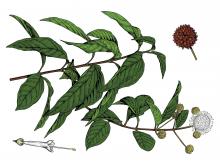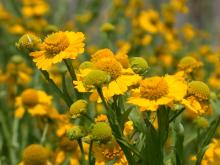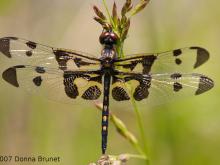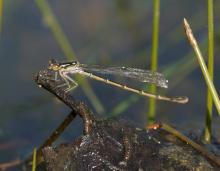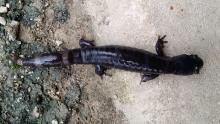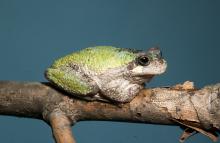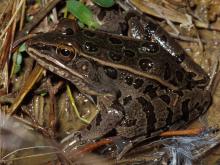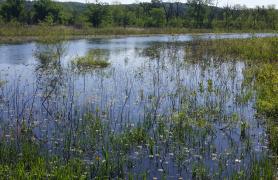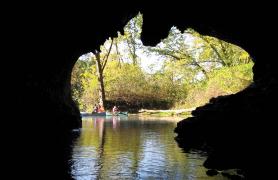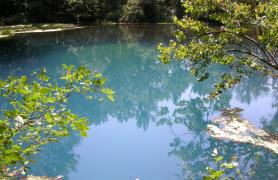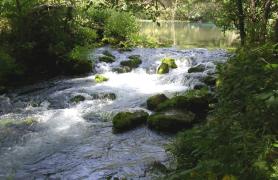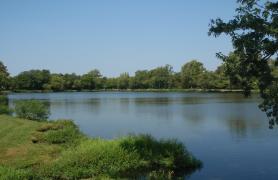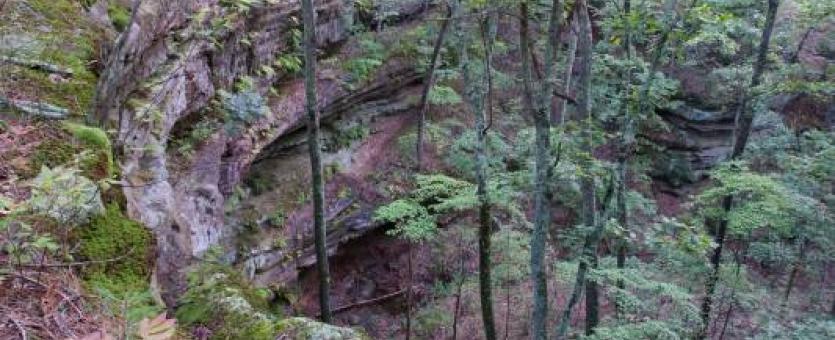
Sinkholes, just like the caves beneath them, are common in regions with karst geology. When sinkholes are blocked and form ponds, they support unique wetland communities.
The Karst Cycle
Slightly acidic groundwater flows through cracks in limestone or dolomite, slowly dissolving the rock. The cracks widen to form cavities and eventually a subterranean drainage system. Some of the cavities become large enough to form caves. The creeks that flow through caves come from surface water that has seeped downward.
As the slightly acidic water continues its etching of the rocks, sinkholes can occur where the ceiling of a cave, and the soil above it, collapse downward into the cave system. Sinkholes sometimes become blocked with surface materials and the resulting depression fills with water, forming a sinkhole pond.
Sinkhole pond communities vary a great deal. Some are dominated by trees, while others feature herbaceous (nonwoody) or shrubby vegetation. Many sinkhole ponds dry out seasonally, but fill up again in spring, just in time for the breeding of amphibians.
When sinkholes occur in uplands, they are often important sources of water for wildlife. Deer, turkey, and wood ducks rely on them. Many species of salamanders, frogs, and toads need these and other fishless ponds for feeding and breeding.
Several plant species are closely associated with sinkhole ponds, too. Virginia sneezeweed, for example, is a federally threatened member of the sunflower family that is known only in Missouri and Virginia. Sinkhole ponds, along with similar habitats of low, wet grasslands and swales underlain by karst geology, are necessary for its survival.
Sinkhole Pond Wetland Communities
These are closed systems because they are usually isolated from other surface water bodies and drain internally: water enters sinkhole wetlands from precipitation, runoff from within the watershed, and from groundwater. Water leaves sinkhole ponds from evaporation and/or from seepage into the karst or cave system below.
Soils in sinkhole ponds are usually silty and restrict water movement. Waters in sinkhole ponds are usually stagnant, hold relatively little oxygen, have a low amount of available nutrients, and are typically neutral to strongly acidic. Water chemistry varies according to the rock and soil types, landforms, vegetation, and water flow characteristics.
Plants of sinkhold pond wetlands include sedges, grasses, and broad-leaved forbs that can only survive in wetlands. Shrubs often line the pond margins. Many plants living in sinkhold pond marshes are Coastal Plain relicts otherwise not found in our region.
Three types of wetland communities occur in Missouri's sinkhole ponds: pond marshes, pond shrub swamps, and pond swamps.
Pond marshes are usually associated with upland sinkhole ponds, and slopes are fairly level. Soils are poorly drained, very deep, and acidic. Standing water from ½ to more than 3 feet inundates the pond for extended periods each year, especially in late autumn through winter and early spring. Pond basins often become dry in mid to late summer or during drought.
- Pond marshes are an imperiled habitat in Missouri and require protective efforts.
- Representative sites include Grassy Pond NA, Pickerelweed Pond in Lincoln Hills NA, Tupelo Gum Pond NA, Sunklands NA, and Burr Oak Basin NA.
Pond shrub swamps are usually associated with basins of sinkholes and other natural depressions on terraces and uplands; they are much like pond marshes, but shrubs dominate not only the border but also often the entire surface area of the sinkhole basin in scattered clumps or dense thickets, with 50 to 100 percent cover, with forbs and sedges filling out the rest of the vegetation. Sometimes larger pond shrub swamps have circular zones, with shrubs on the outer edge and floating aquatics, sedges, or floating vegetation in the pond's center.
- Pond shrub swamps are an imperiled habitat in Missouri and require protective efforts.
- Representative sites include Lily Pond NA, Sunklands NA, Burr Oak Basin NA, Sand Ponds NA, and Tingler Prairie NA.
Pond swamps differ from the other sinkhole pond wetland types by having forested vegetation of one or two tree species dominating, often tupelo gum, green ash, sweet gum, and red maple. The vegetation is 50 to 90 percent closed; it can be uniform throughout the basin or can have circular zones along the edge to the center portion where the deeper water is. The canopy trees are tall, the understory is poorly developed or absent, and the ground cover is sparse or absent, except for floating aquatic plants or plants living at the bases of trees and floating logs.
- Pond swamps are a critically imperiled, extremely rare habitat in Missouri and require protective efforts to prevent them from disappearing from our state.
- Representative sites include Cupola Pond NA, Tupelo Gum Pond NA, and Red Maple Pond NA.
Most of Missouri’s sinkhole basins are in the Ozark and Ozark Border Natural Divisions and the Lincoln Hills Section of the Glaciated Plains Natural Division. They are pretty much absent from northwestern Missouri.
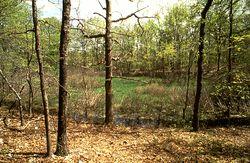
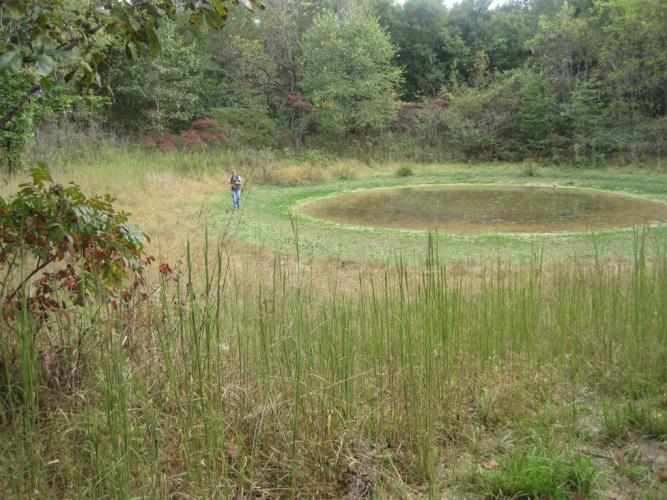
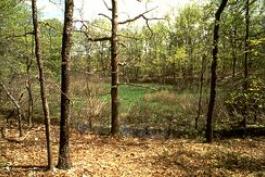
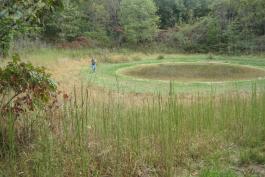
Key species
